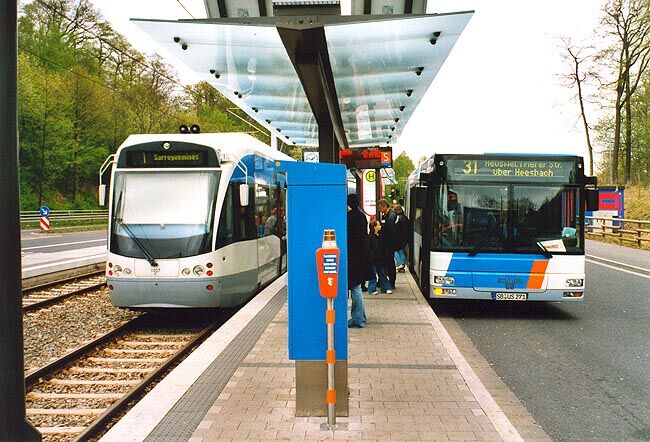Bus or Light Rail, the Evidence Is Clear
Public transit is a necessity in today’s congested cities, yet politicians and their planners tend to ignore the importance of public transit in the 21st century city and either invest in the “cheap and nasty” rapid or express buses, or overly expensive gadgetbahnen like our Skytrain and Canada Line mini-metros. There is also the disturbing notion that by building a subway, will solve all transit woes along a given transit route; sadly not so.
The following two studies should give insight to the fact that modern light rail, built either as a streetcar (tram) or as LRT complete with a reserved rights-of-ways and priority signalling at intersections out performs both bus and gadgetbahnen, in economy of operation; ease of use; and the ability to attract the motorist from the car.
New light rail projects in study beat BRT Evaluating New Start Transit Program Performance: Comparing Rail And Bus
Modern light rail is not a panacea, but it’s proven ability to provide an attractive alternative to the car, while at the same time not bankrupting the taxpayer has made LRT the first choice of transit planners around the world. This singular fact disturbs the LRT naysayers and their beloved SkyTrain, but SkyTrain is nowhere to be seen in the following studies and the reason why is very simple. Despite the shrill cries to the contrary, modern LRT has made gadgetbehnen like SkyTrain obsolete and unless induced by senior governments or questionable politics, no one builds with SkyTrain any more and only three (soon to be two) of the seven SkyTrain type systems built are seriously used as “rapid transit”.
Many politicians do not want to invest in good public transit at all and instead promote BRT or Bus Rapid Transit. BRT is nothing more than an express bus with a dedicated rights-of-way and such is only somewhat cheaper than LRT to install and operate and many so-called BRT operations are merely a tarted up bus operating on only a few kilometres of dedicated R-o-W’s and hardly worth the name “rapid transit”.
Transit Ridership – Rail vs. Bus
It is clear the Metro Vancouver Region needs public transit improvements, but the region has already spent over $9 billion on just three gadgetbahnen lines which merely regurgitates bus riders as rapid transit riders, with only a 3% increase in ridership in 20 years! At the same time auto mode share has remained static at 57%, hardly a statistic to boast about.
The much ballyhooed Evergreen line will not change a thing, as it is merely the uncompleted portion of the Millennium Line, which was too expensive to complete.
The region needs to drag its transit planning from the 1970’s dogma it finds itself in and enter the 21st century and embrace modern LRT. It is modern LRT that has proven to give the biggest transit bang for the buck than any other transit system or mode available and this singular fact worries a great many planners and bureaucrats in Metro Vancouver.





At the end of the day, BRT is a waste of time and money. Edmonton made the jump from buses to LRT. If you use BRT to build up ridership, you are only just concentrating ridership, for example, 99 B-Line in Vancouver.
On all the parallel routes to the 99 B-Line, ridership is almost non-existent. We have 75% unused capacity on these parallel routes, and the 99 B-Line is used to condition riders into taking sky train which operates just like the BRT, long gaps in stops and plenty of other buses running empty to get riders to the BRT or sky train.
Three things have to happen here to get us out of the transit rut:
First, the sky train technology has to be dropped. It requires isolating the tracks to avoid electrocuting pedestrians. This usually means burying or elevating the trains and is expensive. It also increases transit times (for “most riders” due to the transfers imposed) and O&M costs.
Second, everyone at TransLink has to be eliminated. We have $113 million in overhead at TransLink. Ian Jarvis, Brian Mills… and the other staff at TransLink do no useful work under the pretense that they add value and can be axed.
Third, transit fares have to be raised for students to pay for further service. Right now 33% of the riders are students and they only pay about 10% of the cost of transit. To put this into perspective, they only pay about $40 million/yr of the $400 million/yr in revenue from users. Students can pay another $160 million/yr in my opinion to pay for more transit service.
This generates about another ~$273 million/yr in income for transit operations and can pay for LRT or trams here. Problem solved.